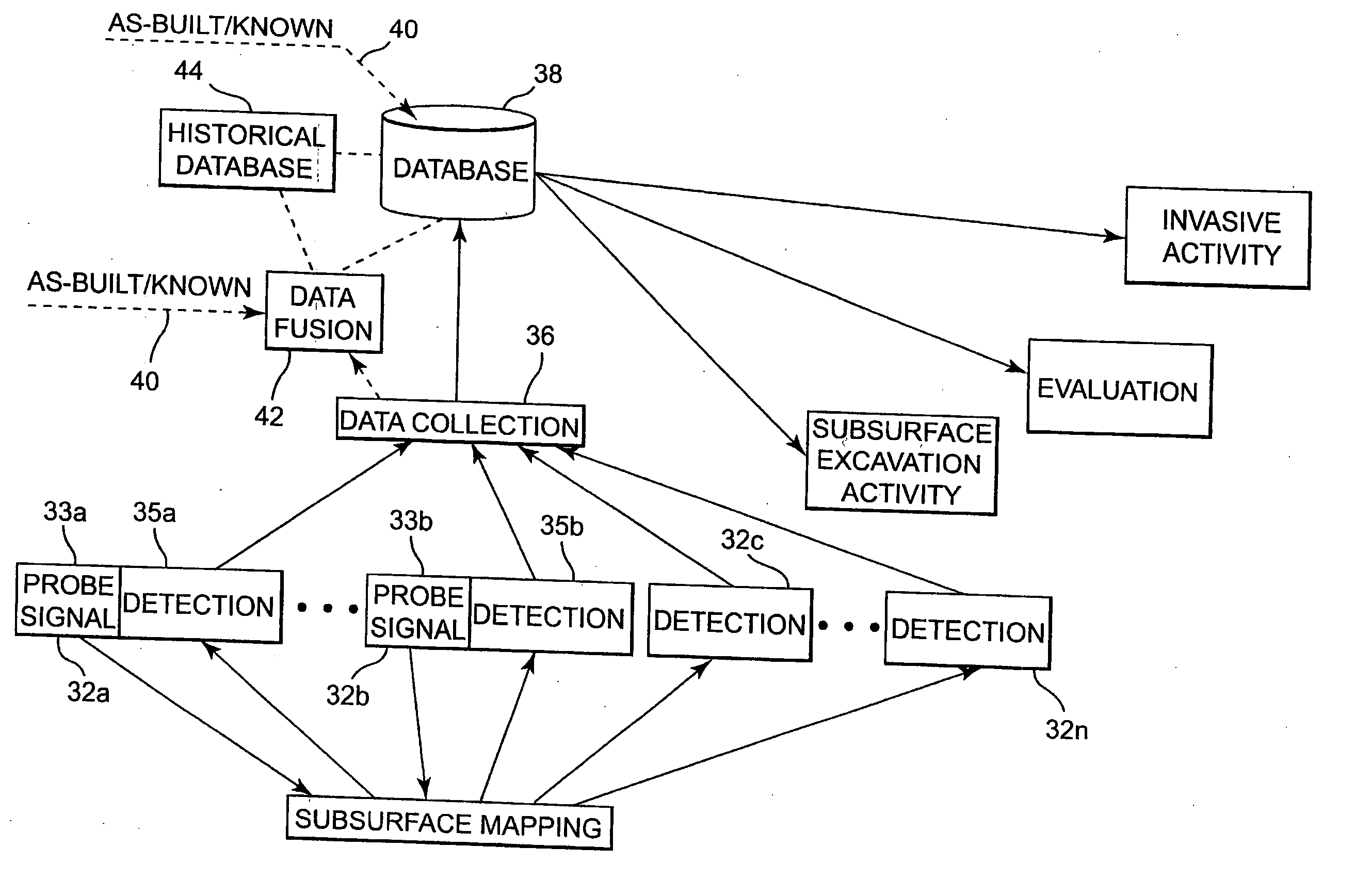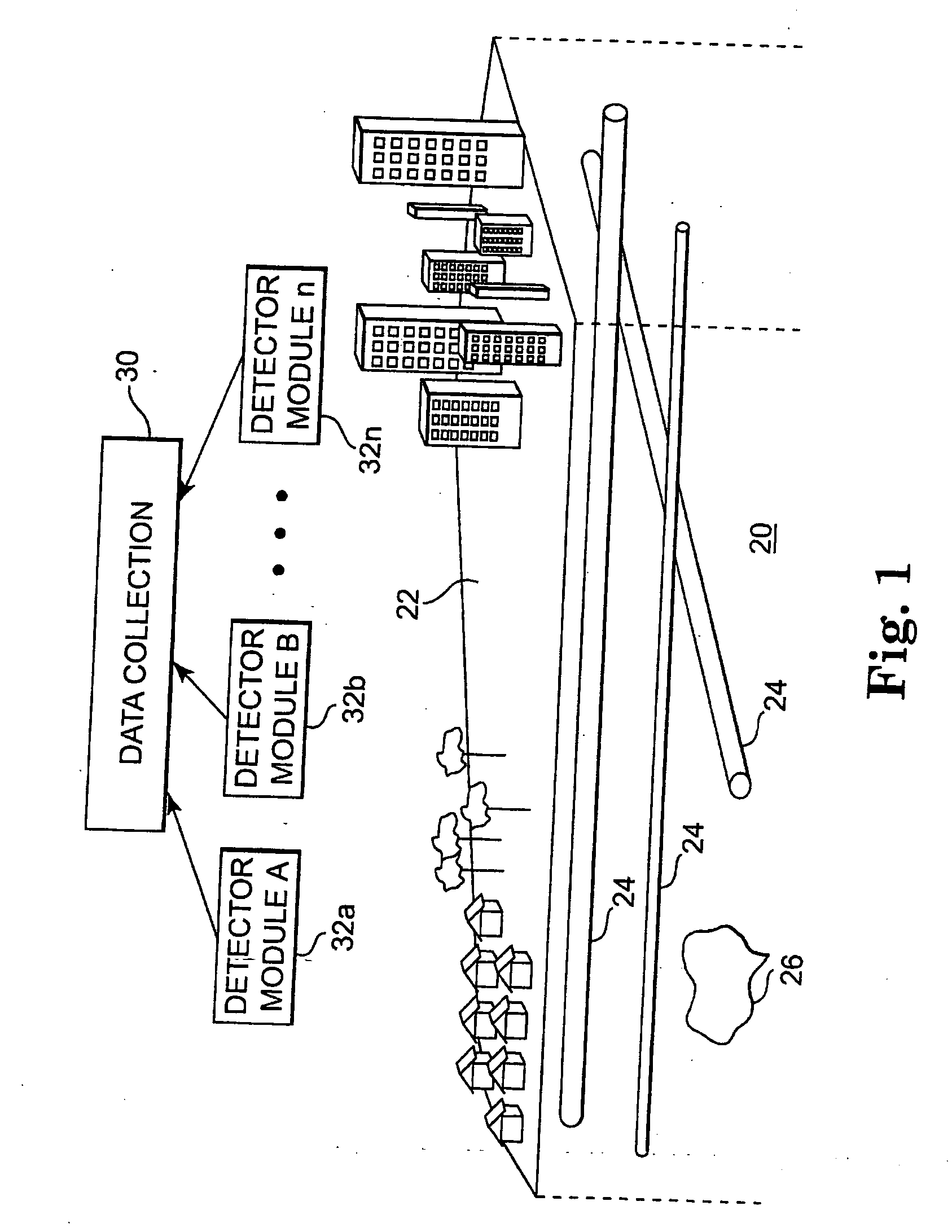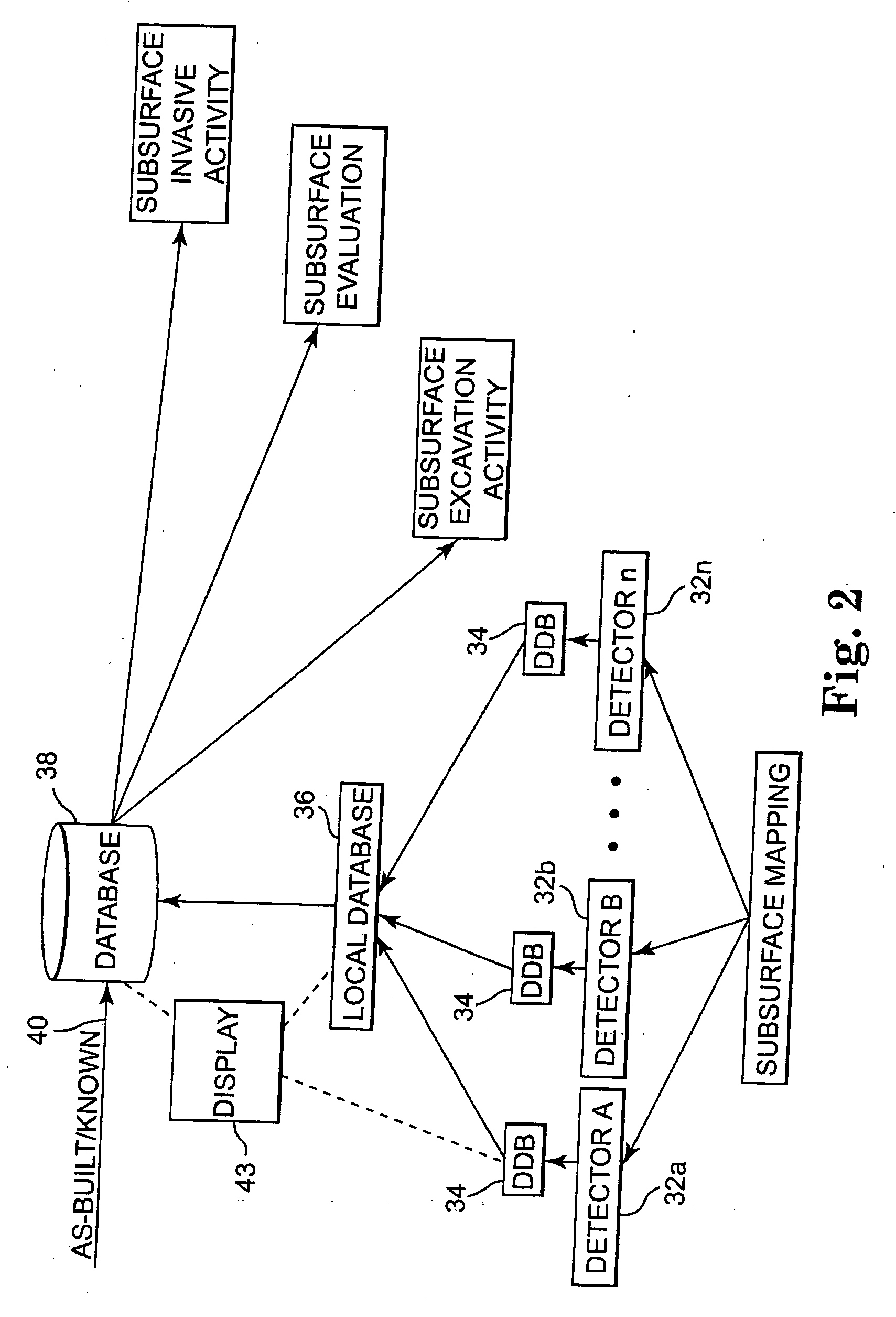Utility mapping and data distribution system and method
a mapping and data technology, applied in wave based measurement systems, instruments, reradiation, etc., can solve the problems of utility detection problems, physical access to utilities, and utility detection costs, and achieve the effect of improving the accuracy of utility detection
- Summary
- Abstract
- Description
- Claims
- Application Information
AI Technical Summary
Benefits of technology
Problems solved by technology
Method used
Image
Examples
Embodiment Construction
[0049] In the following description of the illustrated embodiments, references are made to the accompanying drawings which form a part hereof, and in which is shown by way of illustration, various embodiments in which the invention may be practiced. It is to be understood that other embodiments may be utilized, and structural and functional changes may be made without departing from the scope of the present invention.
[0050] According to an embodiment of the present invention, location data for an existing or new installation site is acquired using at least one, and generally several, utility detectors. One or more of the utility detectors may be of type that generates a probe signal, transmits the probe signal into the subsurface of interest, and detects a response signal from the subsurface. The response signal may be a naturally occurring reflection signal or a signal produced by a device situated within the subsurface, such as by a device mounted to an existing or newly installe...
PUM
 Login to View More
Login to View More Abstract
Description
Claims
Application Information
 Login to View More
Login to View More - R&D
- Intellectual Property
- Life Sciences
- Materials
- Tech Scout
- Unparalleled Data Quality
- Higher Quality Content
- 60% Fewer Hallucinations
Browse by: Latest US Patents, China's latest patents, Technical Efficacy Thesaurus, Application Domain, Technology Topic, Popular Technical Reports.
© 2025 PatSnap. All rights reserved.Legal|Privacy policy|Modern Slavery Act Transparency Statement|Sitemap|About US| Contact US: help@patsnap.com



